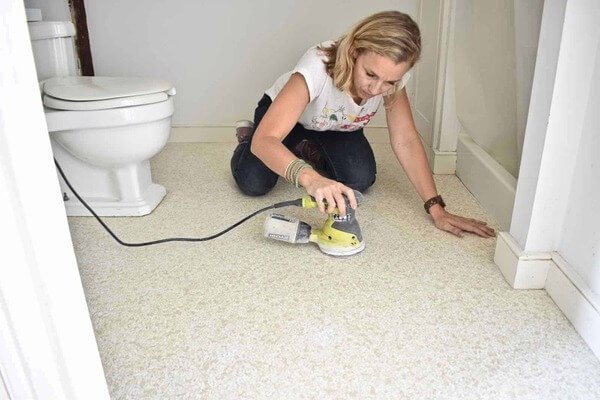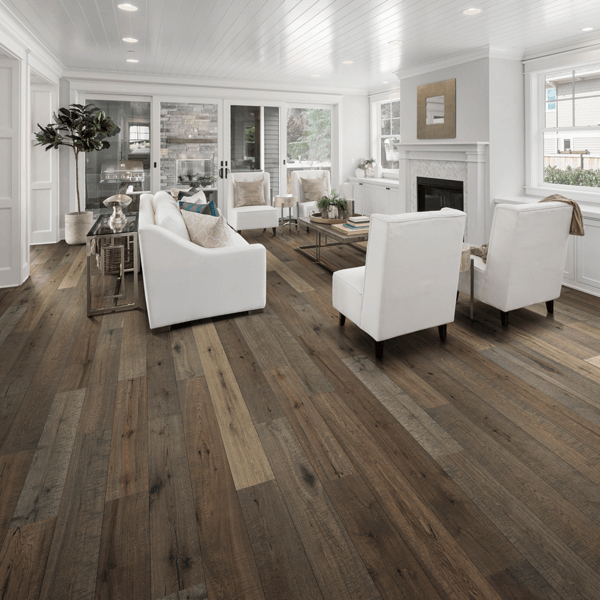Installing solid wood flooring can transform your home, adding warmth, elegance, and value. However, many homeowners wonder if they can install solid wood over existing linoleum flooring. The answer is yes, but it requires careful preparation and consideration of several factors to ensure a successful and lasting installation.
Our clients ask this question a lot, and so are many people online. Therefore, in this article, we’ll explore the steps and considerations involved in installing solid wood over linoleum.
Benefits of Installing Solid Wood Over Linoleum
Before diving into the how-to, let’s look at why you might want to install solid wood over linoleum:
1. Cost Savings: Removing existing linoleum can be labor-intensive and costly. Installing wood directly over it can save time and money.
2. Less Mess: Avoiding demolition means less dust and debris in your home.
3. Added Insulation: Linoleum can act as an additional insulation layer, potentially improving energy efficiency.
Assessing the Condition of the Linoleum
Before you begin, it’s crucial to assess the condition of your linoleum flooring:
1. Stability: The linoleum must be securely adhered to the subfloor. Loose or peeling sections can compromise the wood installation.
2. Evenness: The surface should be even. Any bumps, dips, or uneven areas can lead to problems with the wood floor.
3. Moisture: Check for moisture issues. Linoleum that has been exposed to water damage may harbor mold or mildew, which needs to be addressed before installing wood.
Preparing the Linoleum Surface
Once you’ve determined that the linoleum is in good condition, preparation is key:
1. Clean Thoroughly: Remove all dirt, grease, and debris. A clean surface ensures better adhesion for any underlayment or adhesives used.
2. Sand the Surface: Lightly sanding the linoleum can help create a better bond between the linoleum and the wood flooring.
3. Repair Any Damage: Fix any tears, bubbles, or imperfections in the linoleum. Use a floor patching compound if necessary.
Choosing the Right Underlayment
An underlayment is crucial when installing solid wood over linoleum. It provides a moisture barrier, sound insulation, and a smooth surface for the wood:
1. Moisture Barrier: Choose an underlayment with a built-in moisture barrier to protect the wood from any potential moisture coming through the linoleum.
2. Soundproofing: If noise reduction is a concern, opt for an underlayment that offers soundproofing properties.
3. Cushioning: Some underlayments provide additional cushioning, making the wood floor more comfortable underfoot.
Installation Process
With the linoleum prepped and the underlayment selected, you can proceed with the wood floor installation:
1. Acclimate the Wood: Allow the solid wood planks to acclimate to the room’s humidity and temperature for at least 48 hours before installation.
2. Lay the Underlayment: Follow the manufacturer’s instructions to install the underlayment over the linoleum.
3. Install the Wood Flooring: Begin laying the wood planks, ensuring they are perpendicular to the floor joists for added stability. Use appropriate adhesives or fasteners as recommended by the wood flooring manufacturer.
Post-Installation Considerations
After the wood flooring is installed, there are a few final steps to ensure its longevity:
1. Finish and Seal: Apply a finish or sealant if your wood flooring requires it. This adds a protective layer against wear and moisture.
2. Regular Maintenance: Keep your wood floors clean and dry. Use appropriate cleaning products and techniques to maintain their beauty and durability.
3. Monitor for Issues: Periodically check for any signs of movement, moisture, or damage. Early detection can prevent more significant problems down the road.
Conclusion
Installing solid wood over linoleum is a feasible option that can save time and money while enhancing your home’s aesthetics. By carefully assessing the linoleum’s condition, properly preparing the surface, choosing the right underlayment, and following best practices for installation, you can enjoy the timeless beauty of solid wood flooring without the hassle of removing your existing linoleum.





